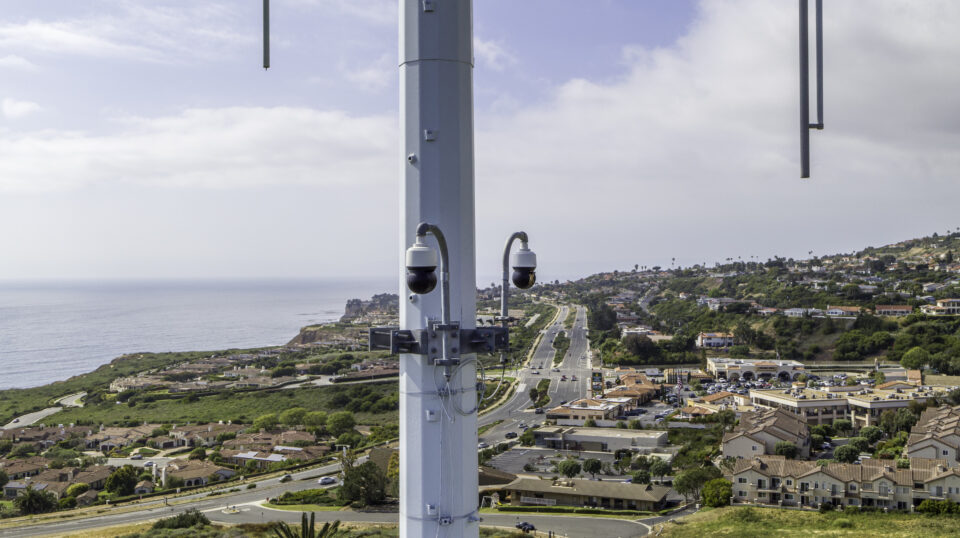Artificial intelligence is helping identify and treat diseases faster with better results for humankind. Natural disasters like wildfires are next.
Fires in the Los Angeles area have claimed more than 16,000 homes and other structures so far this year. Damages in January were estimated as high as $164 billion, making it potentially the worst natural disaster financially in U.S. history, according to Bloomberg.
The U.S. Department of Agriculture and the U.S. Forest Service have reportedly been redirecting resources in recent months toward beneficial fires to reduce overgrowth.
AI enables fire departments to keep more eyes on controlled burns, making them safer and more accepted in communities, say industry experts.
“This is just like cancer treatment,” said Sonia Kastner, CEO and founder of Pano AI, based in San Francisco. “You can do early screening, catch it when it’s in phase one, and hit it with really aggressive treatment so it doesn’t progress — what we’ve seen this fire season is proof that our customers across the country use our solution in this way.”
San Ramon, California-based Green Grid, which specializes in AI for utility companies, in September alerted its customer at a Big Bear resort that a fire started in the San Bernardino National Forest was near, said Chinmoy Saha, the company’s CEO. By acting early, the resort customer was able to prepare for the needed suppression measures for the fire before it reached and became uncontrollable, he said. Due to the favorable weather conditions, the fire did not reach the customer territory.
In the recent Los Angeles area fires, Saha said he had been in discussion with a customer seeking to bring AI to cameras located at the site of the now-devasted Eaton fire that has claimed 17 lives and more than 9,000 buildings.
“If we had our system there, this fire could have been mitigated,” said Saha. “Early detection is the key, so the fire is contained and it doesn’t become a catastrophic wildfire.”
Aiding First Responders With Accelerated Computing
Pano’s service provides human-in-the-loop AI-driven fire detection and alerts that have enabled fire departments to act faster than from 911 calls, accelerating containment efforts, said Kastner.
The company’s Pano Station uses two ultra-high-definition cameras mounted on top of mountains like a cell tower, rotating 360 degrees every minute to capture views 10 miles in all directions. Those images are transmitted to the cloud every minute, where AI models running on GPUs do inference for smoke detection.

Pano has a daytime smoke detection model and a nighttime near infrared model looking for smoke, as well as a nighttime geostationary satellite model. It has a human in the loop for verifying the detections, and it can be confirmed using digital zoom and time-lapse imagery.
It trains on NVIDIA GPUs locally and runs inference on NVIDIA GPUs in the cloud.
Harnessing AI for Controlled Burns
California Department of Forestry and Fire Protection (CAL FIRE) is carrying out prescribed fires, or controlled burns, to reduce dry vegetation that creates fuel for wildfires.
“Controlled burns are necessary, and we didn’t do a good job in California for the past 30 or 40 years,” said Saha. Green Grid has deployed its trailer mounted AI camera sensors for monitoring fires and control burns before they go out of control.
Pano can be used by fire departments to monitor controlled burn zones with its AI-driven cameras to make sure that plumes of smoke don’t appear outside of the permitted zone, maintaining safety.
The company has its cameras stationed at Rancho Palos Verdes, south of the recent Los Angeles area fires.
“The area around the palisades fire was a very overgrown forest, and with a lot of dead fuels, so our hope is that there is going to be more focus on prescribed fires,” said Kastner.
Embracing AI at Fire Departments for Faster Mitigation
CAL FIRE is partnered with Alert California and UC San Diego for a network of cameras owned by investor-owned utilities, CAL FIRE, U.S. Forest Service and other U.S. Department of the Interior agencies.
Through that network, they’ve implemented an AI program that looks for new fire starts. It pans every two minutes and continuously updates, and Alert California has the most up-to-date information from this network.
If AI can enable fire departments to get to the scene of a fire when it’s just a few acres, it’s a lot easier to control than if it’s 50 or more acres, said David Acuna, battalion chief at CAL FIRE, Clovis, California. This is particularly important in remote areas where it might take hours before a human sees and reports a fire, he added.
“They use AI to determine if this looks like a new start,” said Acuna. “Now the key here is the program will then send an email to the relevant emergency command center, saying ‘Hey, I think we spotted a new start, what do you think?’ And it has to be verified by a human.”